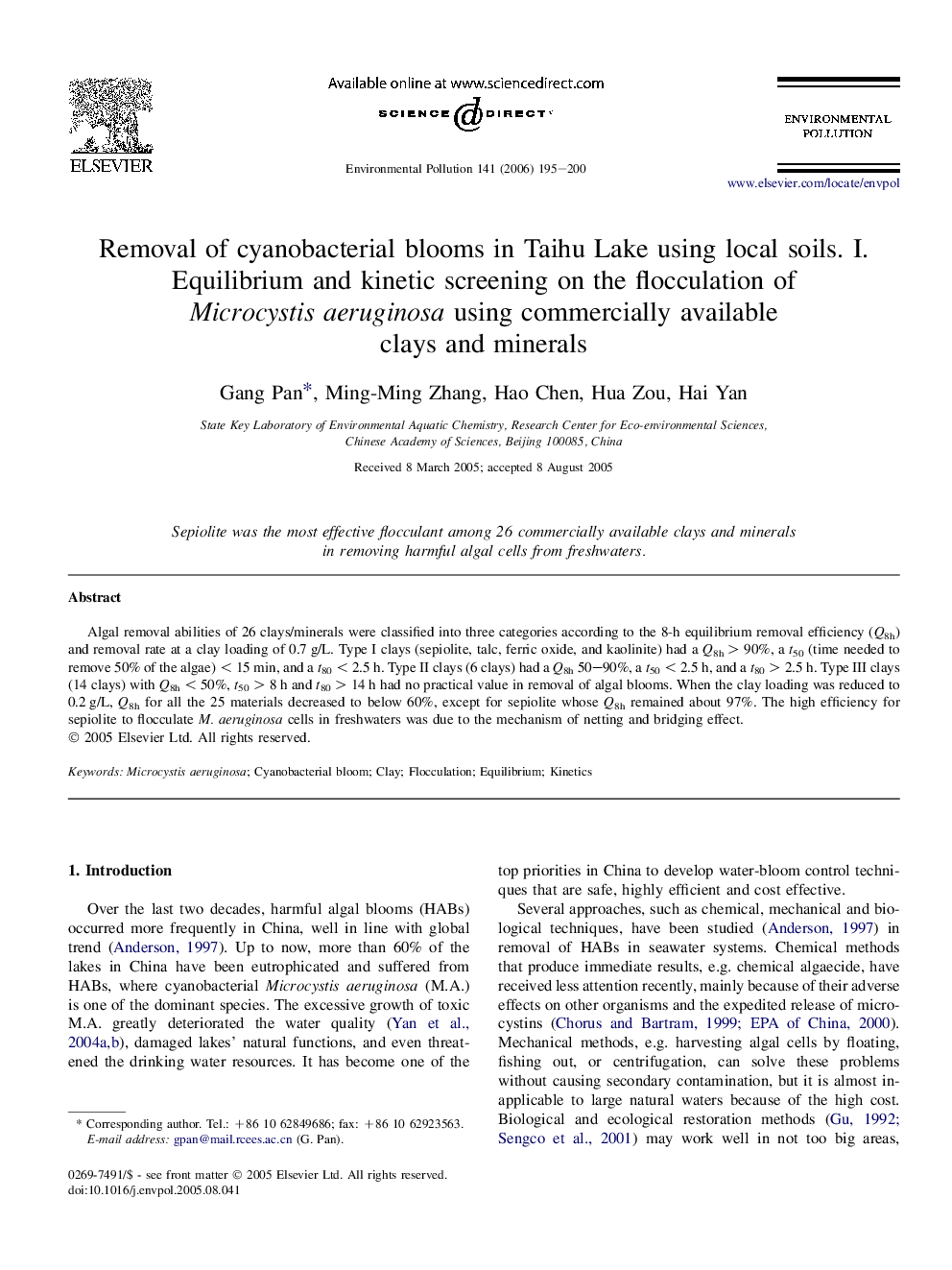| Article ID | Journal | Published Year | Pages | File Type |
|---|---|---|---|---|
| 4427976 | Environmental Pollution | 2006 | 6 Pages |
Algal removal abilities of 26 clays/minerals were classified into three categories according to the 8-h equilibrium removal efficiency (Q8h) and removal rate at a clay loading of 0.7 g/L. Type I clays (sepiolite, talc, ferric oxide, and kaolinite) had a Q8h > 90%, a t50 (time needed to remove 50% of the algae) < 15 min, and a t80 < 2.5 h. Type II clays (6 clays) had a Q8h 50–90%, a t50 < 2.5 h, and a t80 > 2.5 h. Type III clays (14 clays) with Q8h < 50%, t50 > 8 h and t80 > 14 h had no practical value in removal of algal blooms. When the clay loading was reduced to 0.2 g/L, Q8h for all the 25 materials decreased to below 60%, except for sepiolite whose Q8h remained about 97%. The high efficiency for sepiolite to flocculate M. aeruginosa cells in freshwaters was due to the mechanism of netting and bridging effect.
